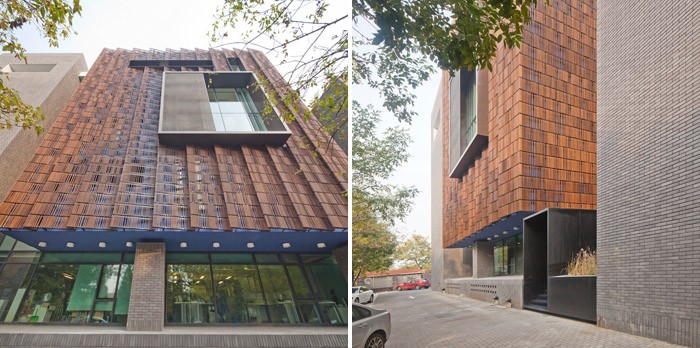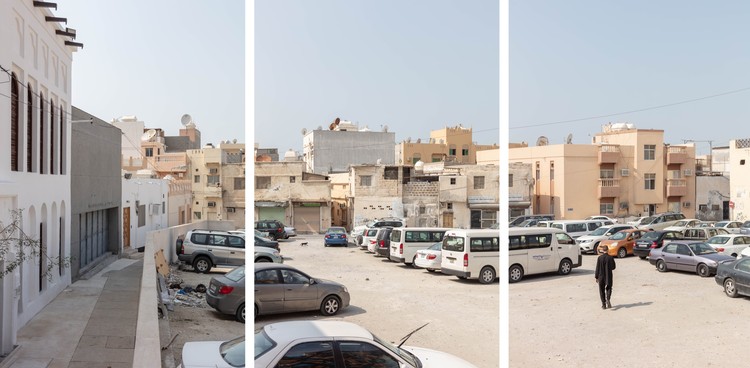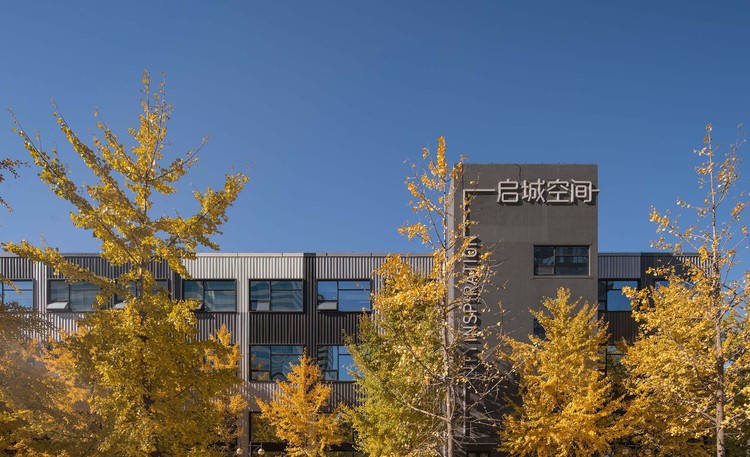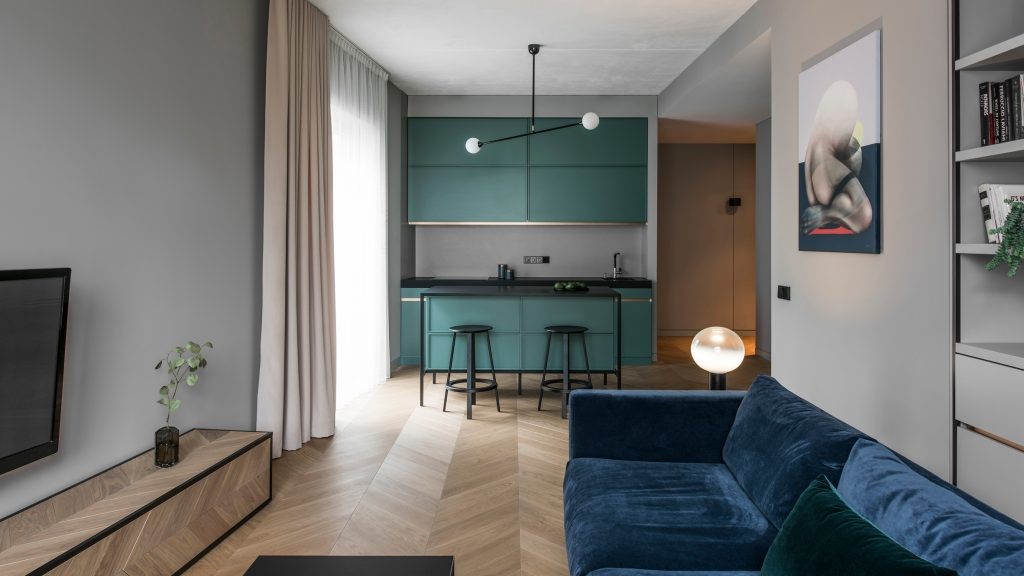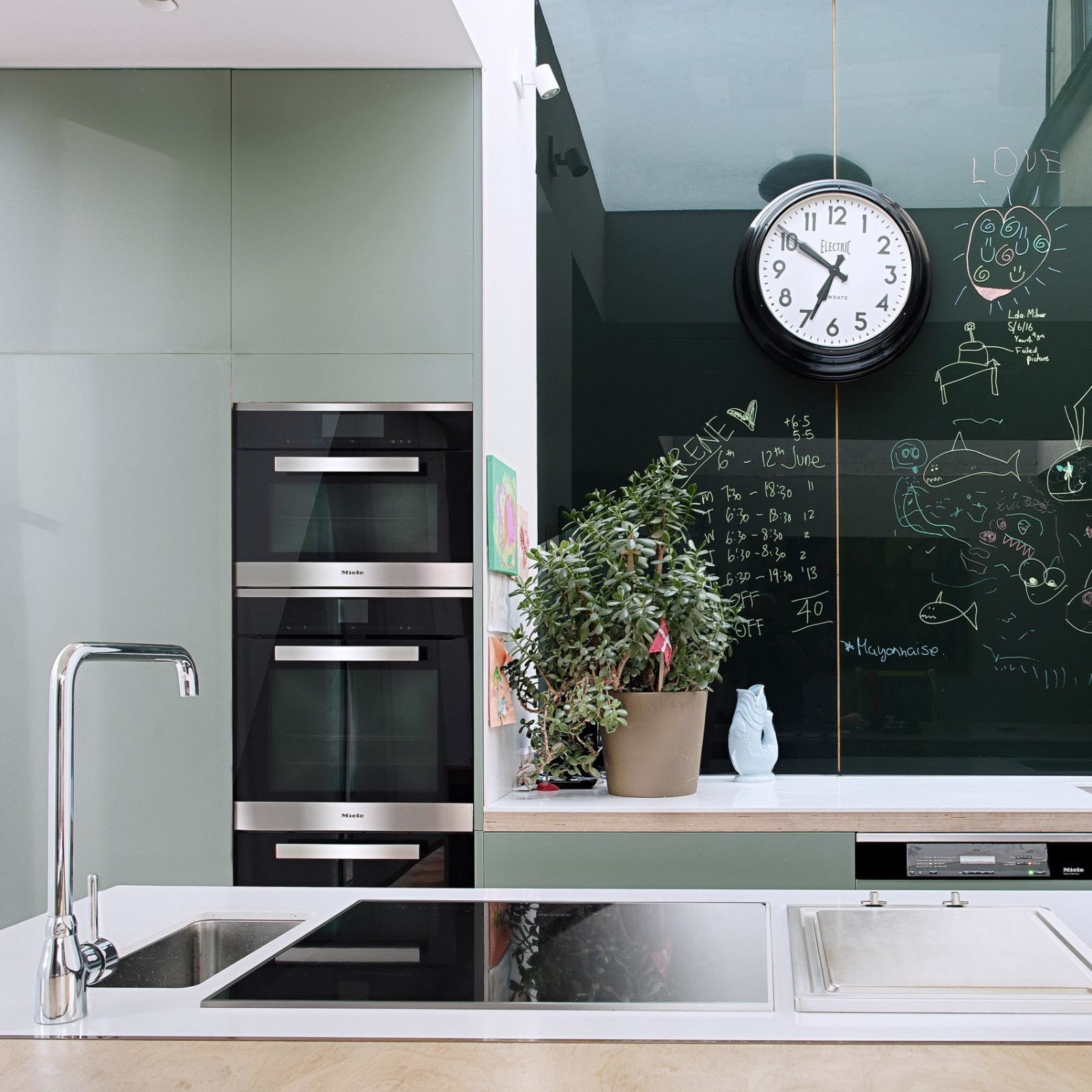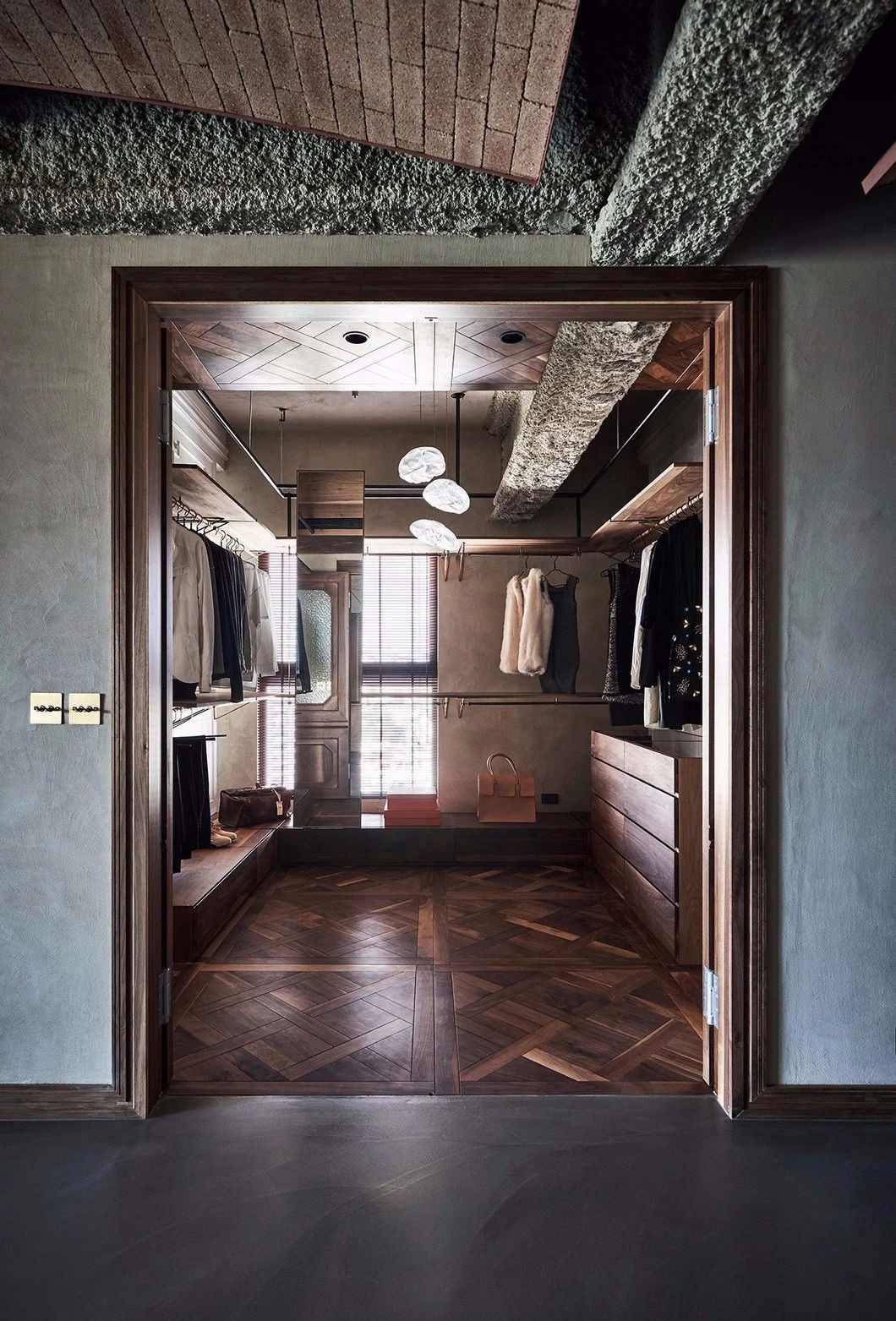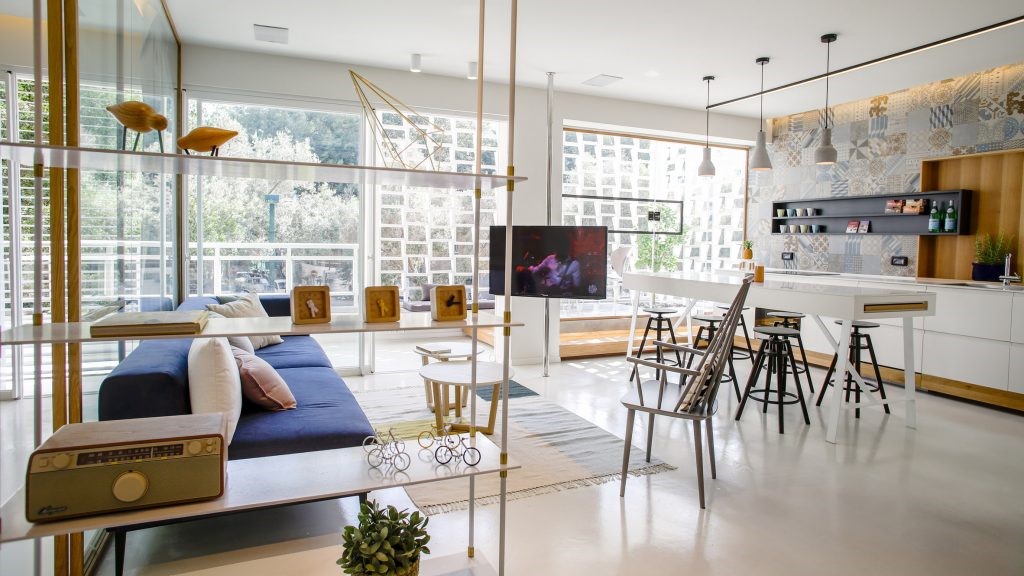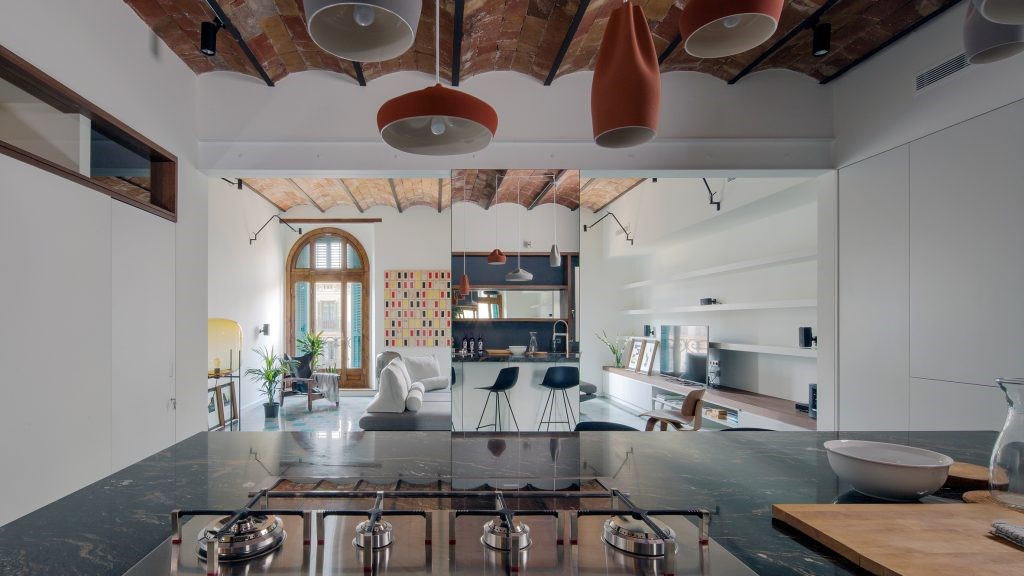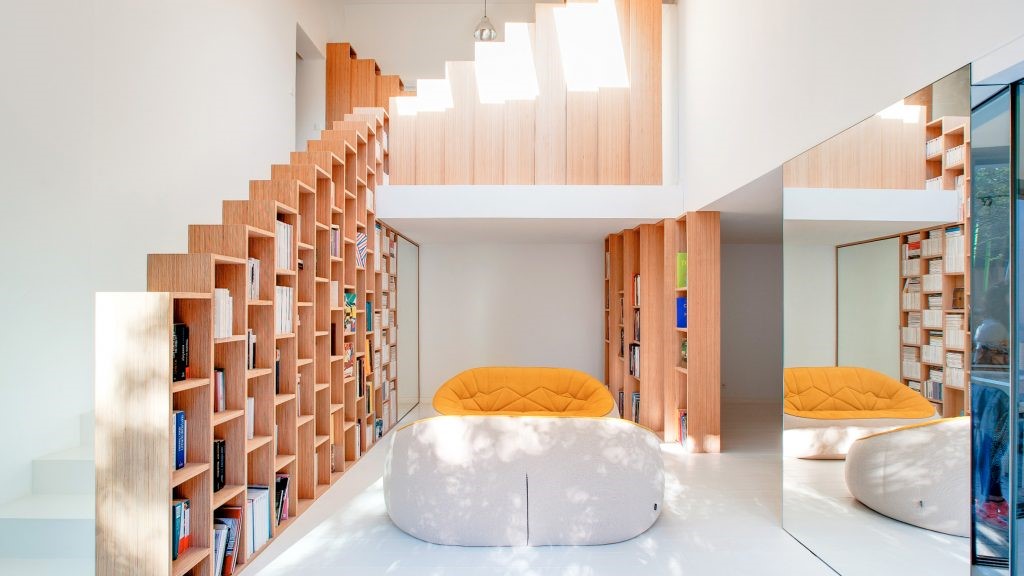Tunnel House MO
2016-02-18 19:00
© Peter Bennetts
(Peter Bennetts)


架构师提供的文本描述。客户向我们简要介绍了他们在山楂的双正面小屋,经过几次与客户的简报后,他们的生活方式显然围绕着他们的花园,尽可能多地在户外度过。不幸的是,他们现有的房子并没有尽可能地利用外部,而且由于完全朝南,房子的中央部分在一年的大部分时间里仍然很黑暗。
Text description provided by the architects. The client approach us with a brief to renovate their double fronted cottage in hawthorn, after a few briefing session with the clients, it became very clear that their lifestyle revolved around their garden and spending their days outdoor as much as possible. Unfortunately, their existing house doesn’t utilise the exterior as well as it could, and being completely south facing, the central body of the house remains quite dark most of the year.
因此,我们的第一种方法是移除尴尬的后部倾斜,而不是从现有的房子延伸,我们决定在前厅外建造一个独立的结构,并将两个空间与一个中央通道连接起来。从概念上讲,这允许这两种构建的形式对比它们各自的形式和特性,从而创建出一种清晰区分“旧”和“新”的体系结构。
So our first approach, was to remove the awkward rear lean-to and instead of extending from the existing house, we decided to build a stand alone structure off the front house and connect the two spaces with a central passageway. Conceptually, this allows the two built form to contrast their individual form and characteristic, creating an architecture that provides clear distinction between ‘old’ and ‘new’.
© Peter Bennetts
(Peter Bennetts)


从战略上讲,新的独居在后方打开了场地的中央身体,创造了一个向北的庭院,用这个规划策略,我们现在有了一个新的北向后起居区,自然光进入了前院的‘最黑暗’点和一个活跃的花园庭院。
Strategically, the new stand alone living at the rear opens the central body of the site to create a north facing courtyard, with this planning strategy we now have a new north facing rear living area, natural light into the ‘darkest’ spot of the front house and an active garden courtyard.
© Peter Bennetts
(Peter Bennetts)


新的起居区现在坐落在后花园和新庭院之间,创造了一种建筑,现在把客户埋在花园之间,以前他们只是在花园旁边。我们认为,这种做法不仅尊重他们的兴趣和生活方式,而且我们希望它能提高他们的兴趣和生活方式。在形式上,这一概念由四个关键要素构成:现有的前厅、隧道、展馆和空洞。这些要素中的每一个都是设计上分开来正式理解的,但又紧密地结合在一起,相互配合。
The new living area is now nestled between the rear garden and the new courtyard, creating an architecture that now physically embeds the clients in between the garden, where previously they were only next to it. We felt this approach not only respected their interest and lifestyle but we hope it will enhance it. Formally the concept is constructed of 4 key elements; the existing front house, the tunnel, the pavilion and the voids. Each of these elements are design to be formally understood separately, but knitted closely together to work with each other.
© Peter Bennetts
(Peter Bennetts)


前厅的前四个房间是用最少的工作来保存的,我们想确保尽可能的简单,这既是因为预算的限制,也是因为我们想要保留前屋的所有现有的特性。
The first four rooms of the front house was preserved with minimal work, we wanted to make sure that we kept it as simple as possible, this was both because of budget constraints but also we wanted to retain all of the existing character of the front house.
© Peter Bennetts
(Peter Bennetts)


在前厅的后部,有一个连接的隧道,引导你进入新的居住区域,形成中央庭院。从概念上讲,隧道是为了传达新旧区域之间的过渡而设计的,隧道是用打捞砖和玻璃滑动门形成的。隧道的砖块部分的设计是为了微妙地压缩空间,然后把客户放进一个高而轻的客厅。
At the rear of the front house, there is a connecting Tunnel which leads you through into the new living zone and forms the central courtyard. Conceptually the tunnel is designed to communicate the transition between the old and new zones, the tunnel is formed in salvage brick and a glazed sliding door. The brick portion of the tunnel is designed to subtly compress the space down before releasing the clients into a high and light filled living room.
© Peter Bennetts
(Peter Bennetts)


砖块也会给人一种重量、密度和凉爽的感觉,当你穿过时,也会瞬间保护你的感官,就像你从挤压中得到的物理空间释放一样,你也会得到感官上的释放,进入新的居住区域和庭院。
The bricks also gives a sense of weight, density and coolth, which when walking through, also momentarily shields your senses, and similar to the physical spatial release you get from the squeeze, you also get sensory release into the new living area and courtyard.
© Peter Bennetts
(Peter Bennetts)


新增加的部分包括厨房、储藏室、就餐、生活、洗澡和洗衣。不像砖隧道,增加的概念是借用你可以在公园展馆中找到的品质。
The new addition consists of a kitchen, pantry, dining, living, bath and laundry. Unlike the brick tunnel, the concept of the addition is to borrow qualities you may find in a park pavilion.
© Peter Bennetts
(Peter Bennetts)


我们决定用镜子和物体(黑匣子)、线条(结构)和平面(屋顶)来支撑这一空间,而不是用门窗打出来,而不是创造一个墙壁空间,在玻璃之间放置空间。通过扭转这种方式,我们从视觉上打开了花园的起居区域,现在的“墙”就是花园本身,它在白天、晚上和季节都会发生微妙的变化。
Rather than creating a wall space with windows and doors punched out, we decided to mirror it and place objects (black boxes), lines (structure) and planes (roof) to hold the space, with the spaces between glazed. By reversing this approach, we visually open the living areas to the garden, the ‘walls’ are now the garden itself, which subtly changes throughout the day, evening and season.
_16.jpg)

屋顶形成了一个不对称的蝶形屋顶,前向天花板和高高的窗户的组合轻轻地将自然光扩散到空间中,并轻轻地将空间向上提升。天花板在晚上继续散发光线,一组轨道灯的设计是为了将光线反射回生活区域,天花板有助于软化光线,同时也在晚上创造了一种相当的雕塑元素。
The roof form kicks up form an asymmetrical butterfly roof, the combination of the raked ceiling and high windows softly diffuses the natural light down into the space and to gently lift the space up. The ceiling continues to diffuse light in the evening, a set of track lights are designed to bounce light back down into the living areas, the ceiling helps to soften the light while also create quite a sculptural element in the evening.
© Peter Bennetts
(Peter Bennetts)


其中的空隙,是空间之间的花园空间,有4套滑动门被设计成完全滑动,这是用来增强“亭子”概念的。随着门完全打开,室内空间变得难以置信的渗透,并邀请花园通过空间,并成为“英雄”的故事。
The Void, is the garden space between the spaces, there is 4 sets of sliding doors which are designed to slide away completely which is used to enhance the ‘pavilion’ concept. With the doors fully opened, the interior space becomes incredibly permeable and invites the garden through the space and become the ‘hero’ of the story.
















































_16.jpg)



_17.jpg)



Architects MO-DO
Location Australia
Category Extension
Project Year 2015
Photographs Peter Bennetts















